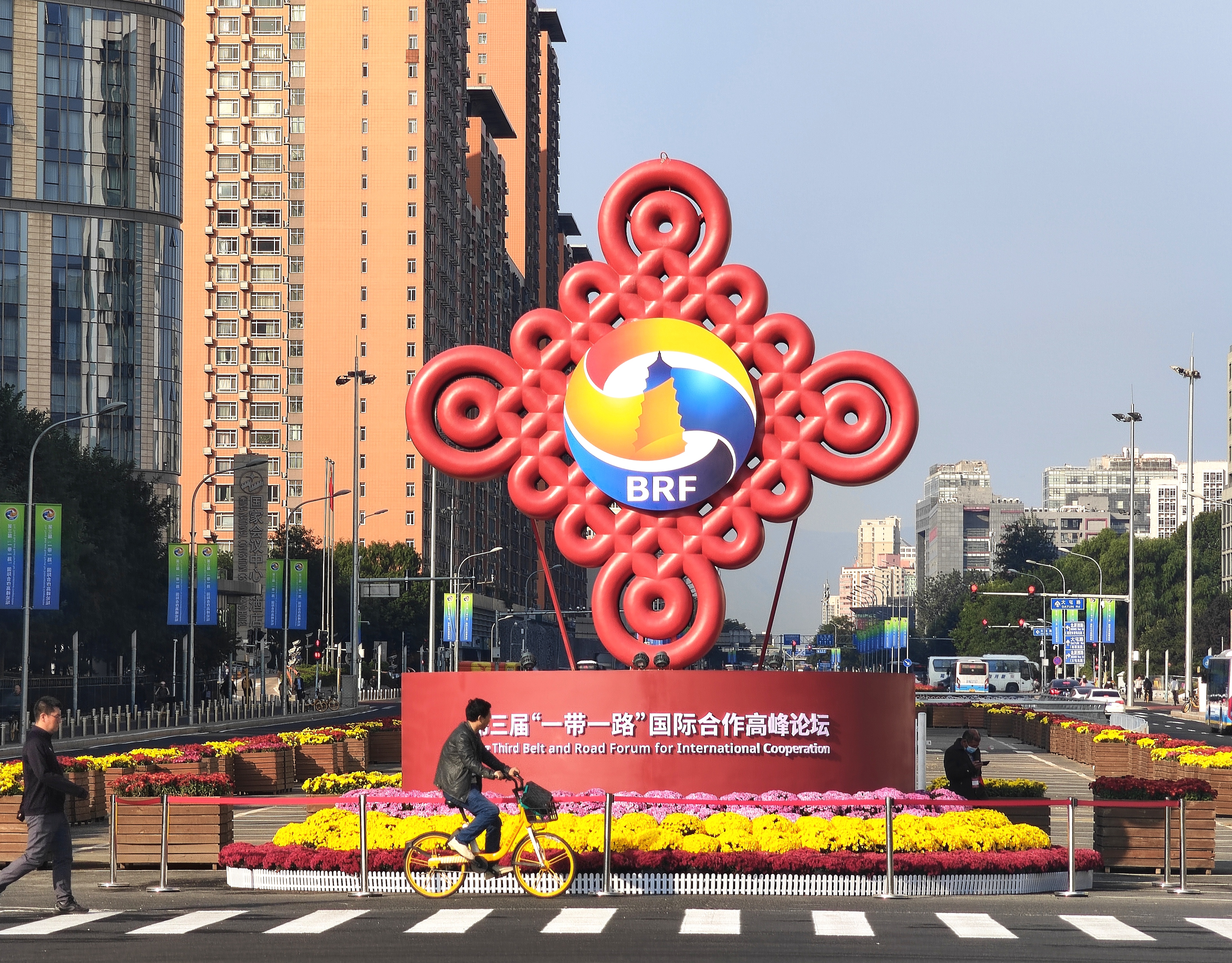
The third Belt and Road Forum for International Cooperation is held on October 17-18?in?Beijing.?(PHOTO:HONG?Xing/S&T?Daily)
By?LU?Zijian
For the past decade since the Belt and Road Initiative (BRI) was proposed, China has been working closely with partner countries to actively promote green and low carbon transformation of the energy sector. In particular, the cooperation in renewable energy has made massive achievements. Some examples of these can be found in South Africa, Cambodia and Argentina.
South Africa wind power
South Africa has abundant wind energy resources which have not yet been fully explored. The De Aar wind power project is a vivid example of cooperation in wind energy utilization between China and South Africa.
Located in Northern Cape province of South Africa, the De Aar project went into operation in 2017, generating 760 million kWh of clean electricity each year, which meets the needs of 300,000 local households, greatly easing the tight and unstable electricity supply in some regions of the country.
The green electricity equals a saving of over 200,000 tons of standard coal and eliminating more than 600,000 tons of CO2. The project also sells carbon emissions permits via global carbon trade markets, realizing both environmental and economic benefits.
In addition, the project is acutely conscious of ecological conservation. Stands for birds to rest were installed on top of each telegraph pole in order to reduce harm to them from transmission equipment. Long term monitoring of animals and plants in the wind power station is regularly conducted and experts in ecology were hired to assess the situation to ensure the sustainable development of the entire project.
Longyuan South Africa Renewables (Pty) Ltd., the constructor and operator of the De Aar project, provided over 700 jobs during the construction phase and can offer more than 100 long-term positions during the operation phase.
Cambodia hydro power
Water is also an important source of clean energy.
Built by China Huaneng Group, the Lower Sesan II hydropower station is the largest hydropower station in Cambodia, and the dam has a length of 6,500 meters, one of the longest in Asia.
To date, the station has generated electricity of over eight billion kWh. With a total installed capacity of 400 megawatts (MW), the station can produce one-fifth of the total electricity of Cambodia, satisfying the need of around 2.6 million people.
Apart from offering clean energy, the station also attached great importance to protecting the local ecological environment.
Investing ten million RMB, China Huaneng Group built the longest simulated natural migration fish route among all Asian hydropower projects, so as to lessen the adverse impact of the project on aquatic life.
The fish route was already completed before the operation of the Lower Sesan II hydropower station began. With 3D digital technology coordinated design, the fish route merges into the surrounding environment like a natural river.
Environment protection is of high priority in other links of the construction and operation of the power station, including junction layout, construction diversion, raw material selection and downstream river regulations.
Argentina solar power
With Argentina being a country that enjoys abundant sunshine, the largest solar power station in South America was built in the country's Cauchari, Jujuy province by China Power Construction and the Shanghai Electric Power Construction Company.
The Cauchari region has more than 2,500 hours of sunlight annually on average, making it one of the most suitable places for photovoltaic (PV) power generation in the world. See page 4
Utilizing 1.2 million PV panels, the Cauchari power station has a total installed capacity of 315 MW, and can reduce 325,000 tons of CO2 emissions annually. By August 31, the total electricity generated by the project reached 2.27 billion kWh.
The construction strictly adhered to the environment protection standards, established a comprehensive assessment mechanism, and adjusted the design back and forth to meet the requirements of environment protection.
For example, the drain lines in the park were constructed based on the original landscape and facilities, which not only cut the workload to a large extent, but also protected the ground vegetation and offered larger living space for animals like alpaca.
The utilization of clean renewable resources is far from enough, and more achievements are expected from cooperation under the BRI framework.
The trio will conduct a series of experiments in fields such as life science, fluid physics, combustion science and materials science. Notably, this is the first time that fruit flies have been taken on a Chinese space mission as experimental subjects. What made scientists choose fruit flies? What experiment will they undergo?
